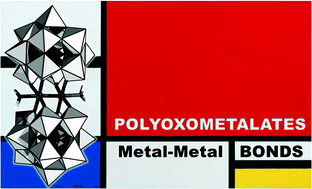Metal–metal bonds in polyoxometalate chemistry
Abstract
Half a century ago, F. Albert Cotton emphasized the relevance of metal–metal bonding in the constitution of cluster materials. Based on his description, nanoscale polyoxometalates (POMs) normally would not be regarded as cluster materials. One reason is that metal–metal bonding is typically associated with inorganic systems featuring metal centres in low oxidation states, a feature that is not common for POMs. However, over the past decades, there have been increasing reports on POMs integrating different types of metal–metal bonding. This article conceptualises and reviews the area of metal–metal bonded POMs, and their preparation and physicochemical properties. Attention is given to the changes in the electronic structure of POMs, the emergence of covalent dynamics and its impact on the development of applications in catalysis, nanoswitches, donor–acceptor systems, electron storage materials and nanoelectronics (i.e., “POMtronics”).

- This article is part of the themed collection: Recent Review Articles


 Please wait while we load your content...
Please wait while we load your content...